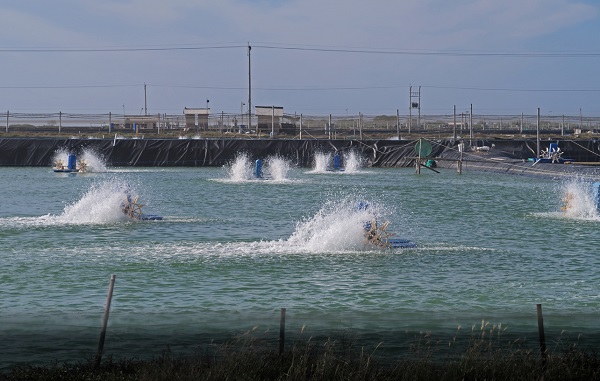.png)
Dr Hemachandra Padhan is Assistant Professor at IIM Sambalpur. Dr Ajit Kumar Babu is Assistant Professor and Saanvi Sharan a student at M.S. Ramaiah University of Applied Sciences.
October 4, 2025 at 6:34 AM IST
Tariffs are usually measured in percentages and price shifts. In India’s shrimp sector, they are measured in loans unpaid and livelihoods lost. The Trump administration’s recent decision to impose steep tariffs on Indian shrimp is one such reminder. A commodity that links ponds in villages in Andhra Pradesh to supermarket freezers in New York has suddenly become the frontline of economic nationalism, with Indian farmers paying the highest price.
India supplies more shrimp to the United States than any other country, accounting for 34.5% of total imports. Yet starting August 7, Indian exporters face a 25% tariff, with an additional 25% penalty set to follow. By contrast, Ecuador, the second-largest supplier, is subject to only a 10% tariff, later rising to 15%. The disparity is glaring. In a price-sensitive commodity such as shrimp, these differences are not minor adjustments but decisive market distortions.
The numbers illustrate the peril. Before tariffs, India’s peeled shrimp fetched an average of $7.63 per kilogram in the US, already lower than historic highs. Ecuador’s shrimp entered at $6.95. After tariffs, India’s price rises to $9.54, while Ecuador’s rises only to $7.65. The gap leaves Indian exporters stranded in a market where the elasticity of demand is high and importers are swift to shift allegiance. Studies suggest shrimp demand elasticity ranges from -0.7 to -1.3. Under such conditions, India’s share of the US market could collapse from 34.5% to 23%. Ecuador’s share would shrink slightly but gain relative to India as importers shift to cheaper suppliers. Meanwhile, smaller producers like Vietnam, Indonesia, and Thailand grouped under “others” benefit as their market share expands.
Farmers Squeezed
The Chilika Lake region in Odisha offers another example. Once known for its traditional shrimp and prawn fisheries, local producers shifted towards export-oriented aquaculture, encouraged by the prospect of higher returns. But when exports slump due to tariffs or restrictions, the local market floods. Oversupply drives prices down, undermining small fishers who cannot compete with large exporters offloading their unsold stock. For many families around Chilika, this means lower incomes and rising uncertainty about the future of their traditional occupation.
Distorted Trade
At its heart, international trade rests on arbitrage, the ability to buy goods cheaply in one market and sell them for more elsewhere. This principle underpins the movement of shrimp from Indian ponds to American supermarkets. Tariffs unravel this principle. By inflating the cost of Indian shrimp relative to Ecuadorian or Vietnamese supplies, they trigger substitution. Analysts estimate India’s export volumes to the US could fall between 11% and 22% relative to Ecuador’s. These are not minor adjustments but fundamental redistributions of market share, eroding India’s hard-won presence in global seafood trade.
The ripple effects are wide. US consumers are unlikely to escape unscathed: higher tariffs elevate landed costs, leading to higher retail prices or reduced availability. For Indian farmers, the problem is oversupply. Ponds filled with shrimp must be sold somewhere, and the domestic market cannot absorb the glut at remunerative prices. Once again, as with earlier anti-dumping duties imposed by the US and EU, the burden falls disproportionately on rural households least equipped to withstand volatility.
Policy Lessons
The challenge for India is twofold. First, it must diversify its export markets so that dependence on the US does not leave farmers vulnerable to political decisions taken thousands of miles away. Efforts to expand into Japan, the EU, and West Asia are important steps, but they require sustained government and industry support.
Second, India must build its domestic value chain. If farmers are forced to sell locally, they require robust infrastructure for processing, marketing, and distribution to ensure better prices. Without this, sudden shifts from exports to local gluts will keep crushing farm incomes.
Third, a stronger safety net is essential. Just as crop insurance protects farmers from weather shocks, aquaculture requires mechanisms to guard against trade shocks. Credit relief, insurance, and cooperative models could prevent cycles of indebtedness that now loom over shrimp producers with every tariff announcement.
None of these are easy fixes. Yet without them, Indian aquaculture will remain at the mercy of geopolitical whims.
The Trump tariffs on Indian shrimp may appear to be a tool of economic nationalism aimed at protecting US producers. In reality, they disrupt supply chains, raise prices for American consumers, and inflict hardship on Indian farmers.
From the ponds of Andhra Pradesh to the waters of Chilika Lake in Odisha, the consequences are felt deeply. Trade wars are often fought in the language of numbers, tariffs, and percentages. But their true story lies in the struggles of farmers who find that the global market they supply can vanish overnight, leaving them with ponds full of unsold shrimp and debts they cannot repay.




